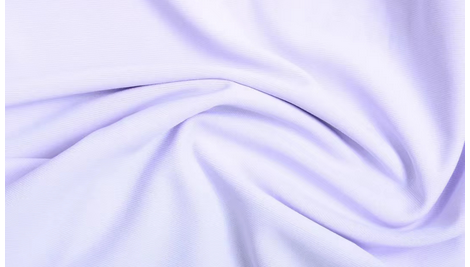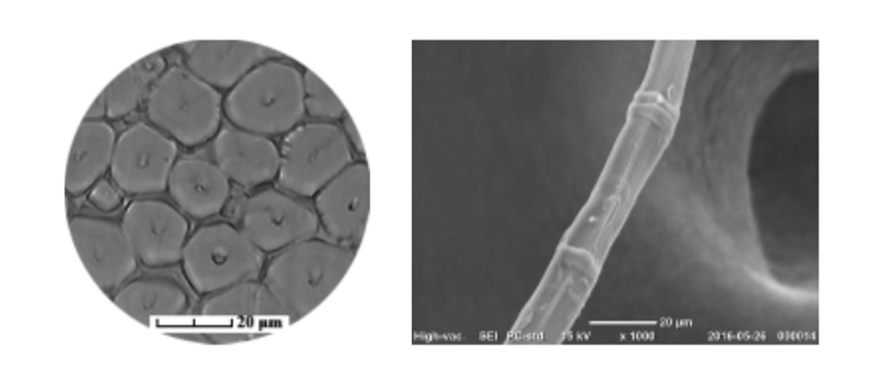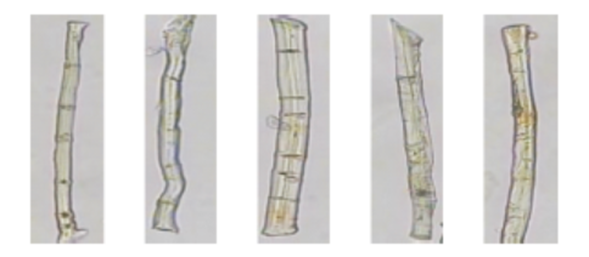The hot summer has arrived, and coolness and comfort are one of the most important needs of consumers when choosing clothing. In recent years, many businesses have promoted the concept of “ice silk” in summer, claiming that it can make the wearer feel cooler. So, what exactly is the principle of this material, and how does it make us cooler?
01 Ice silk is indeed cool, but only for a while. In fact, there are currently no relevant national standards and textile industry standards to clearly define the concept of “ice silk”. “Ice silk” is just a kind of Marketing product name. According to a survey of “ice silk” clothing on the market, it can be found that most of these fabrics are made of viscose fiber (also known as rayon or rayon), polyester (also known as polyester fiber), nylon (also known as nylon) Weaved from other chemical fibers.

Photo gallery copyright, no permission to reprint here, must come up with a technical term for textiles – instant coolness on contact. National standard GB/T
35263-2017 “Textiles
“Detection and Evaluation of Instant Cooling Performance on Contact” defines “instant cooling sensation on contact” as “the moment when the skin comes into contact with a fabric that is lower than its temperature, causing a rapid loss of heat on the skin surface and an instant drop in temperature, and then passes through the temperature-sensing nerves in the skin. The cooling sensation is formed after the peripheral parts are reflected to the brain.” It can be seen that when fabrics that are lower than the skin temperature come into contact with human skin, the human body will have an instant cool feeling upon contact. This time is relatively short and may only last for a few seconds, tens of seconds or minutes when the fabric is first worn. The temperature of the fabric is very close to the temperature of the human body. When the two reach thermal equilibrium, the cool feeling disappears. The principle of contact cooling is the conduction of heat. The human body temperature is higher than the temperature of the fabric. When the two come into contact, the heat is transferred from the human body to the surface of the fabric, causing the body temperature to decrease. So why do some fabrics feel more obvious and cool when touched? Generally speaking, there are several reasons: 1) Fiber materials with large thermal conductivity will cause a more obvious cooling sensation when the fabric comes into contact. The greater the thermal conductivity, the faster the heat conduction when the human body comes into contact with the fabric. Among commonly used ordinary textile fibers, nylon has the highest thermal conductivity, and polyester has a relatively high thermal conductivity. Adding trace amounts of nano-powders of minerals such as jade or mica to the fiber, using the properties of these minerals to conduct heat well and absorb heat slowly, can enhance the cooling function of the fiber; 2) Smooth and smooth fabrics bring The cool feeling will be more obvious at the moment of contact. The flat and smooth fabric surface has a larger contact area and a faster heat dissipation rate; 3) From the perspective of post-finishing technology, the use of cooling finishing agents to treat the fabric surface also improves heat conduction. speed to improve the cooling sensation at the moment of contact. However, as mentioned above, although this type of fabric can make people “cool” for a while, this coolness often passes quickly. Fortunately, there are still many ways to keep us cool for longer. 02 It’s not just cool for a while, it’s also cool all summer. When consumers buy clothing and bedding in summer, they can’t just rely on the cool feeling when touching the fabric. They should pay more attention to whether the fabric has continuous heat dissipation function. There are three main ways to achieve continuous heat dissipation function. Three methods: moisture absorption and perspiration, fast heat conduction and external physical cooling. Multiple methods can also be combined. The following is a brief explanation with an example. There are many products that use moisture wicking methods to continuously dissipate heat, which can be divided into two categories: natural fibers and chemical fibers. Let’s first talk about hemp fiber among natural fibers. This is the preferred natural material for summer clothing. Flax, hemp, and apocynum are all good choices. Taking flax as an example, flax fiber has good hygroscopicity, good moisture-wicking and perspiration properties, and has natural antibacterial and deodorizing properties. The cross-section of the fiber is irregular polygonal, and the cellulose cells have a lumen structure, arranged in parallel, and bonded together by pectin in the fiber. The irregular outer structure and inner cavity structure of this fiber help to form a capillary effect, speeding up moisture conduction and perspiration. Sweat evaporates on the fiber surface and absorbs surrounding heat, making the human body feel cool and comfortable. It is used in clothing or beds. The quality is relatively comfortable.

The cross-section and longitudinal morphology of flax fiber under the microscope. Image source: Yan Huina, Zhao Feng, Xing Mengyang, Wu Ziying. Research on the identification of two kinds of cultural relics flax fibers [J]. Journal of Zhejiang Sci-Tech University (Nature Science Edition), 2017,37(02):185-189.

Longitudinal hollow morphology of flax fibers under the microscope Picture source: Zhao Yutao, Huang Yangdong, Deng Zhongmin. Cotton and flax based on image processing Automatic detection of fibers [J]. Cotton Textile Technology, 2019, 47(09): 7-12. The moisture absorption and perspiration function of chemical fibers is achieved by improving the capillary effect through special-shaped cross-sections. For example, hollow fibers, cross-section fibers, triangular cross-section fibers, etc. are a commonly used method to enhance the function of fabrics to conduct moisture, sweat, and diffuse body heat. The artificially modified chemical fibers with special-shaped cross-sections will help to form a capillary effect, speeding up moisture conduction and perspiration. At the same time, the special-shaped cross-sections will increase the specific surface area of the fibers.�Accelerates the evaporation rate of sweat, making the human body feel dry and cool. This type of fiber is a series of polyester fiber products with excellent moisture absorption and perspiration properties, and is often used in sports knitted clothing. For example, some fibers have a cross-shaped cross-section and four grooves on the surface, which accelerates the diffusion and evaporation of sweat from the body surface to the fabric surface. Nowadays, some mats on the market are woven with ultra-high molecular weight polyethylene fibers. Because the fibers conduct heat quickly and have a smooth surface, they have a continuous cooling feeling similar to bamboo mats in an environment below body temperature. Clothing equipped with external cooling equipment can also cool the human body. For example, individual combat uniforms equipped with a liquid cooling system or an air cooling system and an external power supply can provide soldiers with long-lasting cooling in hot environments; a vest designed with ice pack pockets can hold multiple ice packs, which is beneficial to the front of the human body. Rapid cooling of the chest and back area, and long-lasting cooling can be achieved by replacing ice packs. Textile science is also constantly exploring the use of new fibers, changing the chemical and physical structures of fibers, innovating fabric composition and weaving structures, and adopting new finishing technologies to enhance the moisture-wicking performance of fabrics. In order to be as comfortable as possible, consumers can choose appropriate clothing based on the usage scenario when purchasing clothing. For example, if you are going to do a lot of exercise, you should choose moisture-absorbing and quick-drying knitted fabrics; if you are doing daily activities in the office in the summer (it is cooler with air conditioning), you can choose cotton fabrics; if you are going out for a small amount of activities, you can choose cotton and linen blends or Fabrics made of viscose fiber and other materials; if you need to be active in the sun, you also need to consider choosing fabrics with strong sun protection function to protect the skin from sunburn.





